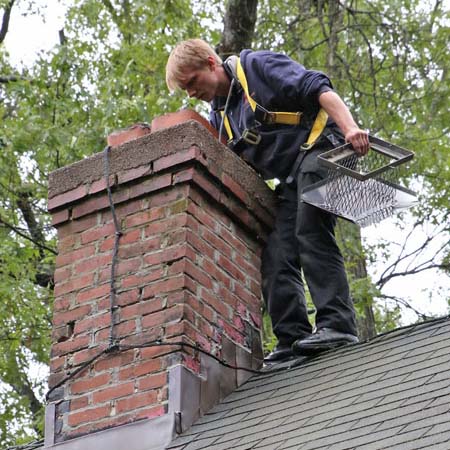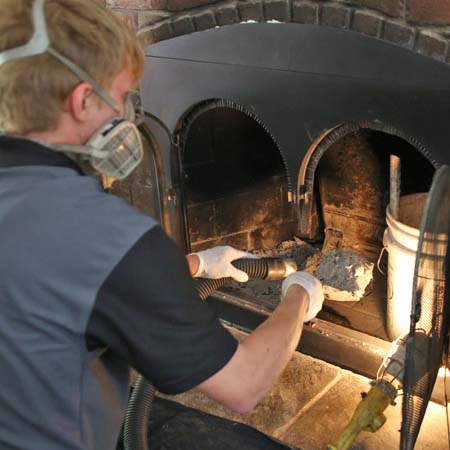Preparing your Fireplace for Spring Season
 As winter is winding down, it’s time to begin preparations for the annual fireplace spring cleaning. As many parts of the country experienced extremely cold weather, the fireplace has been working overtime keeping homes warm and cozy. But every time that beautiful flame is ignited, there is a hidden danger growing in the chimney. It’s called creosote. It’s a sticky, oily substance that is a natural by-product of combustion. And it’s the number one cause of chimney fires. Then there is the smoke, ash and other dirt and grime that also builds up in the fireplace. Cleaning your fireplace in the spring will make sure it’s safe for use when old man winter returns in a few months.
As winter is winding down, it’s time to begin preparations for the annual fireplace spring cleaning. As many parts of the country experienced extremely cold weather, the fireplace has been working overtime keeping homes warm and cozy. But every time that beautiful flame is ignited, there is a hidden danger growing in the chimney. It’s called creosote. It’s a sticky, oily substance that is a natural by-product of combustion. And it’s the number one cause of chimney fires. Then there is the smoke, ash and other dirt and grime that also builds up in the fireplace. Cleaning your fireplace in the spring will make sure it’s safe for use when old man winter returns in a few months.
Do I Need to Clean My Gas Fireplace?
While gas fireplaces burn cleaner, they still need to be cleaned. Creosote is present in gas combustion, but in smaller quantities. There is also dust, soot, and dirt that should be removed. So, don’t forget about cleaning your gas fireplace in the spring.
1. Turn off the pilot light. If you’re not sure how to do this, contact your local gas company and they will do it for you.
2. Remove the ceramic logs and grate. Clean with a lint-free cloth or brush.
3. Vacuum any loose particles inside the fireplace.
4. Use a wet cloth to clean soot and any stains in the firebox. For stubborn stains try a natural water-vinegar cleaning solution.
5. Clean glass doors with a streak-free window cleaner or warm water and a lint free cloth.
6. Replace the grate and logs.
7. Clean the gas fireplace surround.
 Cleaning Your Wood-Burning Fireplace
Cleaning Your Wood-Burning Fireplace
Cleaning a wood-burning fireplace can be a dirty job. Before starting make sure you wear old clothes that you don’t mind getting dirty. Wear goggles or a facemask so you don’t breathe in any dust or ash particles. And lay some newspapers on the floor in front of the fireplace. Cover any nearby furniture.
1. Empty out the firebox. Remove the grate and any remaining wood logs.
2. Clean out the ash. You can store the ash in a metal container and recycle them in your garden. Reserve a small amount of ash for use during the winter season. It helps maintain the fire.
3. Vacuum any remaining debris in the firebox.
4. Use a wire brush to scrape away as much creosote on the walls inside the fireplace as you can. You can also mix baking soda with water to make a natural paste. Apply the paste to the creosote and scrub. Rinse the surface with water. There are commercial creosote removers. But they should only be used by chimney professionals who have the training, equipment, and ventilation for proper use.
5. Use a damp free cloth and water to clean any remaining soot and dirt inside the fireplace. For tough stains, you can make a natural cleaner by mixing equal parts of water and vinegar. Rinse the surface with water and dry with a lint-free cloth. Be sure to clean the damper too.
6. Use water or a streak-free window cleaner to gently clean the fireplace door glass.
7. Clean the masonry surround and mantle.
8. Scrub the grates clean using the water-vinegar cleaning solution. This can get dirty so you may want to do clean it outside on your patio or in the garage with the door open for ventilation.
9. Replace the grates in the firebox when clean.
10. Close the damper door when the fireplace is not in use. This will prevent rain and pests from getting into the fireplace.
Annual Inspection and Chimney Sweep
Whether you have a gas or wood-burning fireplace, the Chimney Safety Institute of America (CSIA) along with fire safety professionals highly recommend homeowners have an annual chimney inspection and sweep. The inspection will uncover any hidden dangers and necessary repairs for its continued safe operation and to protect your family from the risk of fire or carbon monoxide exposure.
Contact Northeastern Chimney to schedule an appointment with a certified chimney sweep for your annual spring fireplace cleaning today!


